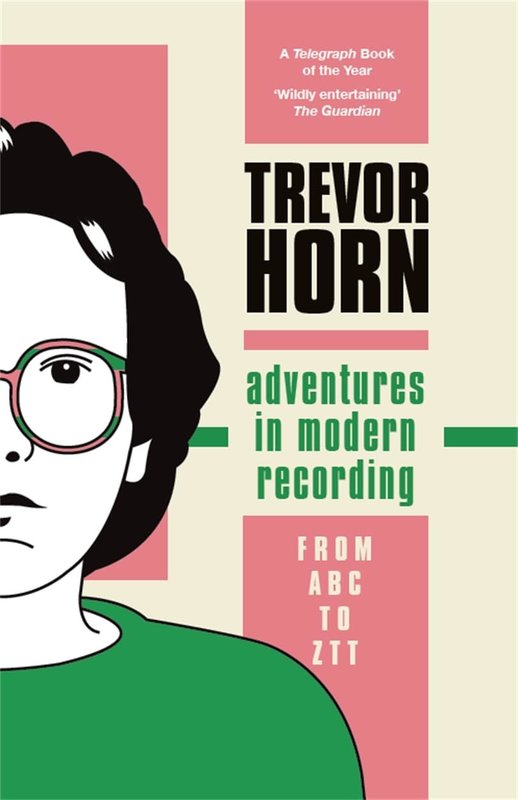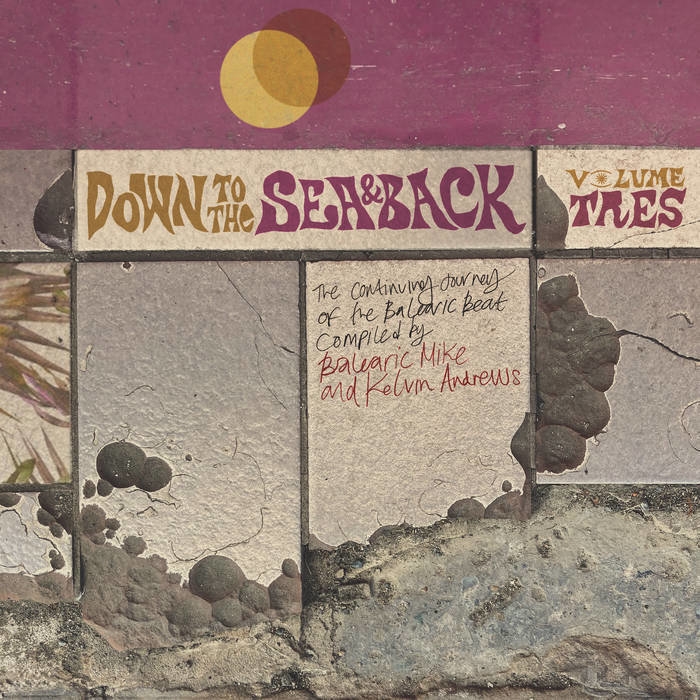
Trevor Horn’s book is one of those ones you just fly through. It’s a mixture of a narrative of his life combined with key records that mattered to him and that he worked on. From Buggles to Yes to The Art of Noise, Frankie Goes To Hollywood, Seal and more…
As someone who has worked in the music industry (and still do) for over 30 years he is a fascinating character to me. Not only does he exist at the point when high end synths and samplers first started to appear alongside digital recording but he is also a fan and a record label and studio owner which gives him the tools to understand how this thing called music works from all aspects. He’s also a brilliant A&R man which is part and parcel of being a leading producer. Further he made brilliant brilliant records that changed the landscape.
Horn’s gateway drug (if you like) was big band music. The sounds of Artie Shaw and Bennie Goodman which was his reasoning for not enjoying rock ’n’ roll when he first heard it. As he says, “to me, rock ’n’ roll seemed like folk music: it only had three chords and you can hear them coming a mile off.”
It didn’t take him long to understand there was far more to it than that… His first recording was a cover of The Beatle’s ‘Please Please Me’ on a tape recorder that his uncle Tommy had given him. Later when asked “When did you first realise you were a musical genius?” he answers “It’s the wrong question. The questions should be, “When did I realise I wasn’t a musical genius?” And that was when I learn’t ‘Please Please Me’ on a little four stringed guitar and recorded it into my tape recorder and listened to it back. It was bloody awful.”
So things could only get better but he knew his limitations and I guess as a producer that is a perfect starting place. If you need keys get the best keys player you can and on… You get the idea. There’s some really great advice peppered throughout the book as you would expect. His dad says to him early on, “When you’re playing with a singer, listen for the singer. If you can’t hear him you’re playing too loud – the singer is the main thing.”
After writing a semi-hit single for Dusty Springfield in ‘Baby Blue’ he moved to a house where he stayed for sometime and one of the housemates was an Australian with a fondness for reggae who spent all day playing dub really loud. Sometimes Horn would go down and listen to the music with him and loved how it sounded so brutal. “How the producer would break down the sound and strip it to its raw elements. How everything would go through an echo unit and clank between the speakers. Most of my ideas for the 12-inch remixes that I made in the 80s came from those records. Or should I say they came from my recollection of those records, which is an important distinction.” Horn is so good at just getting the backing track so nice and then dropping elements of the track in and out on top. Case in point the extended mix of 'Owner Of A Lonely Heart' 12" from 3:20 onwards...
From here came his first big (massive) hit with Buggle’s ‘Video Killed The Radio Star’ in 1979 which paved the way to work with Yes. As a side note Buggle’s 1980 release ‘The Plastic Age’ has a brilliant mellow B-side called ‘Island’. It’s super balearic.
A massive part of the Trevor Horn 80s sound is his use of the Fairlight CMI synth and sampler which you literally needed a science degree to work. Enter Fairlight enabler J.J. Jeczalik who could basically turn the thing inside out and knew exactly how to get the ideas in Horn’s mind into the machine and out the other side. He also clearly added a whole lot more along the way. One of Horn’s first massive pop productions was Dollar’s ‘Mirror Mirror’ though it’s a further release by them called ‘Give Me Back My Heart’ (linked above - check it from one minute in) where it feels he found its true potential. Looping up the backing vocals many times before sampling them in the Fairlight and playing them across the keys. Here you first hear that classic 80s sound that they went on to utilise across Yes, Frankie Goes To Hollywood and many more killer 12’s. No one quite understand how they were getting these sounds. It caught the attention of others and you see how he just then moves forwards. ABC into Malcolm McLaren and on…
There’s tales of the formation of ZTT, Sarm (which became their studio), Grace Jones 'Slave To The Rhythm' project, one of the most brilliant sounding records ever, 'Moments In Love' (the best electronic record ever??) and more… There’s a great anecdote of going to the Paradise Garage with Chris Blackwell and going with him to the DJ box where Larry Levin proceeded to play half an hour of Trevor Word productions. ‘Beat Box’, ‘The Look Of Love’ and ‘Owner of a Lonely Heart’. I can’t imagine what it’s like hearing those records on that system. I’m not sure whether you’d enjoy it or sit there sort of picking holes in stuff and wishing you’d done them differently but they sound like special times.
As many people will know he went on to produce those ridiculously great sounding Seal album particularly the debut which contains one of my favourite tracks from a production perspective ‘Violet’. It’s the way he mixes the drum machine with live drums in such a natural way and then Seal’s voice just sails in. It’s very similar to what he did with Grace Jones in that it’s pop music taken to the heights it can reach when synths and voices and atmosphere and understanding all align to make things special. He’s done it over and over again.
There’s some brilliant take outs in this book and it’s super insightful at highlighting that late 70s to 80s period when the 12 inch went somewhere brand new as well as gently signposting some production thoughts and takes. Horn doesn’t hold back with his stories or insights which is very refreshing. You feel he’s very comfortable in who he is ands opinions so he just tells things as they happened. They just feel very honest. A super book.
‘Adventures In Modern Recording’ by Trevor Horn is available now and published by Nine Eight Books. To further explore the work of Trevor Horn head to Discogs and start digging. There's so much B side gold.


